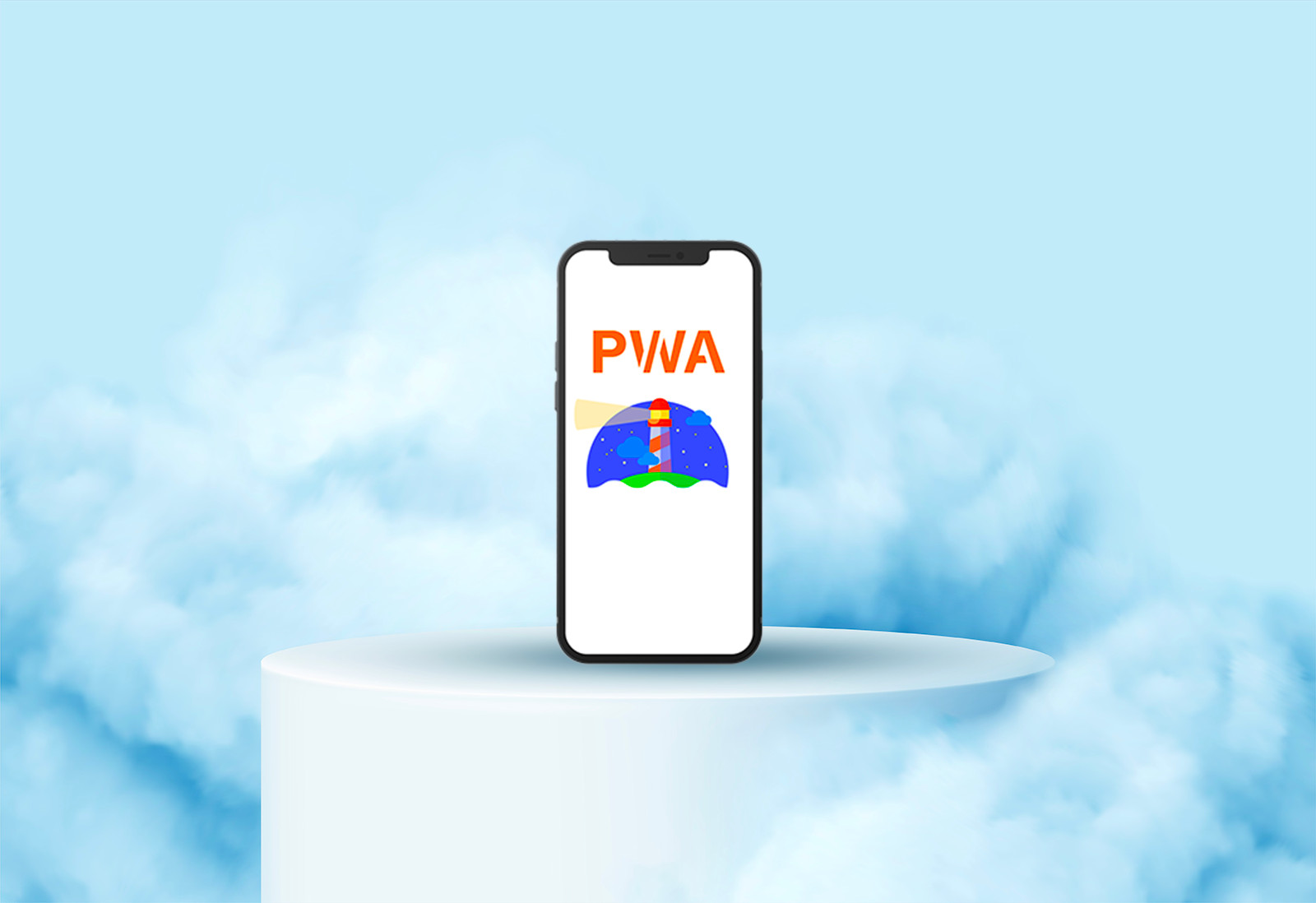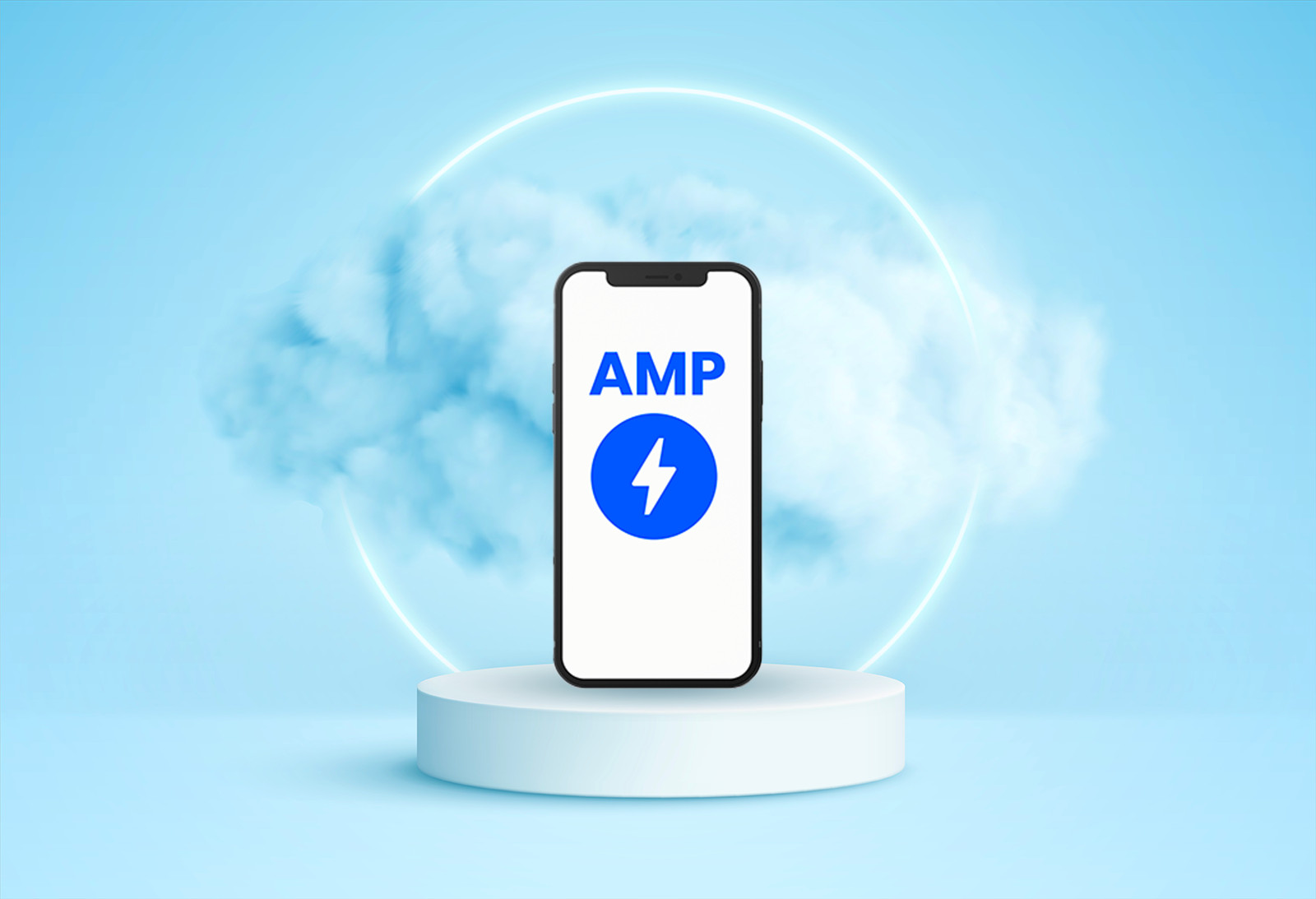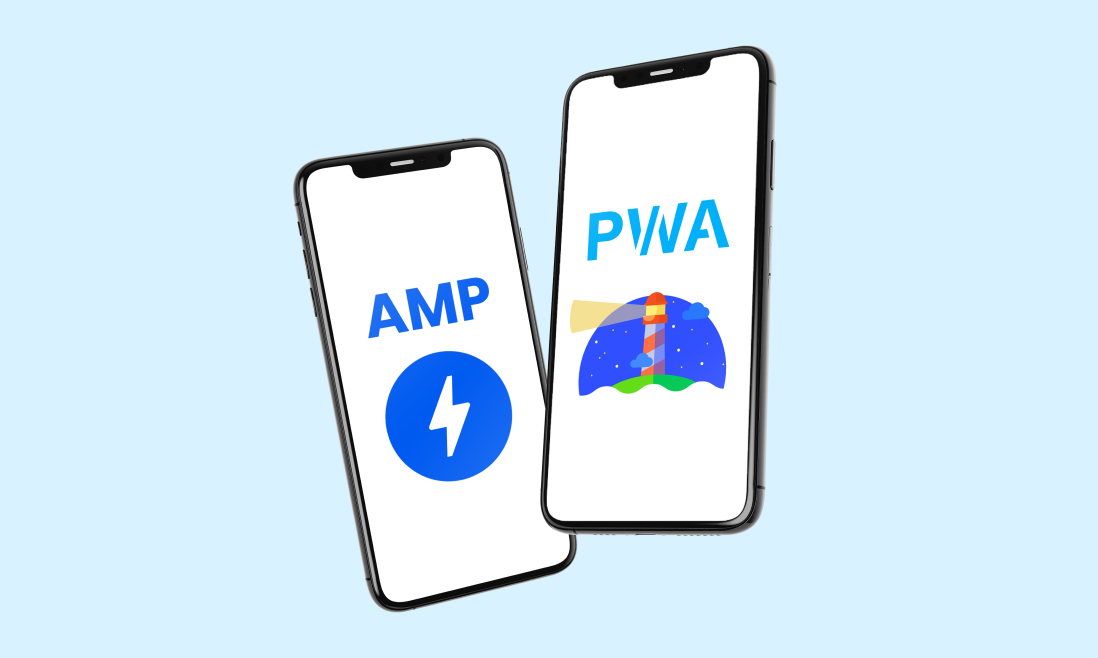Waiting for a webpage to load feels like watching paint dry.
We’ve all been there, tapping our fingers impatiently as a screen loads.
Enter the world of PWA (Progressive Web Apps) and AMP (Accelerated Mobile Pages), two technologies that are revolutionizing how quickly we can access information online.
This blog post will dive into the showdown between PWA VS AMP, helping you understand which might be the best fit for your website.
Whether you’re a business owner, a developer, or just curious about the latest in web technology, keep reading to discover how these tools can make the web a faster place for everyone.
What is PWA?
Progressive Web Apps, or PWAs, are a type of technology that combines the features of regular websites and native mobile applications. They are created using common web technologies such as HTML, CSS, and JavaScript.
The unique thing about PWAs is that they offer a user experience very similar to that of mobile apps found on your phone or tablet.
PWAs operate based on a principle known as progressive enhancement. This means that the basic content and functionality are available to anyone using any browser.
However, those accessing the PWA through modern browsers that support advanced features will experience additional capabilities.

PWA’s Key Features:
- Add to Home Screen: PWAs make it easy for users to install the app directly from the web. With a simple tap of the “add to home screen” button, the app is ready to use in seconds.
- Offline Mode: Unlike traditional websites, PWAs can function in offline or poor network conditions by saving data from the user’s last visit. Essential content, such as shopping carts and order history, can be accessed without an internet connection.
- Push Notifications: This feature allows businesses to keep users engaged by sending them updates and notifications, even when the app is not actively being used.
- App-like Interface: PWAs offer an interface that mimics that of native apps, which many users prefer for its ease of use and attractive design.
What is AMP?
AMP, or Accelerated Mobile Pages, is a technology designed to make web pages load very quickly, especially on mobile devices. It’s like a set of building rules for websites that helps them open fast on phones and tablets.
AMP works by using a special kind of HTML, which is the code that websites are made of. This version of HTML, known as AMP HTML, has custom tags and some rules to follow.
These rules help make sure that the web pages don’t have any slow-loading elements, like certain types of fancy animations or high-resolution images that take a long time to show up.
The main goal of AMP is to focus on the most important part of a website – its content. AMP removes complicated designs and features to make sure you get to the content you’re interested in as quickly as possible.

AMP’s Key Features:
- High Page Loading Speed: AMP’s top priority is to make web pages open almost instantly. This is great for visitors because fast-loading pages make browsing easier and more enjoyable.
- Supports All Types of Ads: Even though AMP pages are designed to be lightweight and fast, they still support different types and formats of advertisements. This means websites can still make money from ads without slowing down the page.
- Improves Search Ranking: Since AMP makes pages load faster and creates a better experience for users, it also helps improve a website’s position in Google search results. Google likes to promote fast-loading pages, so AMP can help a site appear higher in search listings.
- Great for Content-Heavy Websites: Websites with a lot of articles or videos benefit from AMP because it can make their pages load quickly. Also, AMP pages can appear in special places, like the “Top Stories” section on Google’s search results, making them more visible to people looking for information.
PWA vs AMP: How Are They Similar?
PWA and AMP share a common mission: to make browsing the web on mobile devices a quick, easy, and pleasant experience. They both tackle the challenge of slow-loading pages and aim to ensure that everyone can enjoy the web, no matter where they are or what device they’re using.
Focus on Mobile User Experience
Both PWAs and AMPs are designed with mobile users in the spotlight.
This means they aim to make websites more enjoyable and easier to use on smaller screens, which might not always have the fastest internet connection. Whether it’s reading an article or browsing a store, these technologies want to ensure that everything looks good and works well on your device.
Speed Emphasis

One of the biggest similarities between PWAs and AMPs is how much they care about speed. Nobody likes to wait for a slow website to load, especially on a mobile device.
PWAs tackle this issue by storing some data on your device ahead of time (this is called caching) and managing it all with something known as service workers. On the other hand, AMP speeds things up by using a simpler form of HTML and delivering content in a very efficient way.
The goal for both is to get the webpage in front of you as fast as possible.
Google Support
Google, the giant of the internet search world, is a big fan of both PWAs and AMPs. They’ve put a lot of effort into encouraging websites to adopt these technologies.
Google offers lots of help in the form of guidelines, tools, and resources for developers who want to make their websites faster and more mobile-friendly using PWA and AMP. This support highlights how important Google thinks these technologies are for the future of the web.
Speed Comparison
While AMP pages might load a tiny bit faster than PWAs in some cases because of their more restricted HTML, the difference in speed is usually so small that most people wouldn’t notice. Both PWAs and AMPs work hard to ensure that when you tap on a link or open a web app, you’re not left waiting.
PWA vs AMP: How Are They Different?
While Progressive Web Apps and Accelerated Mobile Pages share some common goals, they have several key differences. Let’s explore these differences to understand how they cater to different needs and functionalities.
1. Main Uses

PWAs are a great choice for almost any kind of business, but they shine especially in areas like e-commerce and social media. This is because these types of businesses need a lot of interaction with their users.
For example, online stores want their customers to browse products, add items to a shopping cart, and check out. PWAs support these interactions really well because they work a lot like apps you download on your phone, making it easy for users to engage and perform various actions.
On the other hand, AMPs are particularly useful for media companies, blog sites, and businesses that have a lot of articles or videos. These platforms primarily focus on delivering content quickly to their users.
AMPs help these sites load their content super fast, which is great for readers who just want to jump straight into articles or news stories.
2. Development
Developing a Progressive Web App mainly involves using JavaScript. This is a programming language that helps add interactive elements and complex features to web pages, making PWAs feel more like apps you’d download from an app store.
On the other hand, Accelerated Mobile Pages are made by simplifying the code. This means removing or reducing unnecessary CSS (which styles the page) and JavaScript.
The idea is to strip down anything that might make the web page slow to load. By focusing on the essentials, AMPs can load super fast, which is great for mobile users who don’t want to wait.
3. Appearance

Progressive Web Apps are designed to mimic the appearance and functionality of native mobile apps.
This means when you’re using a PWA, it feels like you’re using an app that you’ve installed from an app store, even though you’re actually accessing it through the web. The design is sleek and user-friendly, making navigation and interaction smooth and intuitive.
Accelerated Mobile Pages, in contrast, prioritize speed over design complexity. As a result, AMPs tend to look more like traditional web pages, with simpler designs.
They avoid using heavy design elements that could slow down the page loading time. This approach ensures that the content is delivered quickly to the user, but it may not provide the same engaging experience as a PWA.
4. Accessibility
One of the coolest things about Progressive Web Apps is their offline mode. This means you can still use them even if you don’t have an internet connection, or if the connection is weak.
Plus, you can add a PWA to your device’s home menu, just like any other app you download. This makes it super easy to open and use anytime you want, without having to open your web browser first.
Accelerated Mobile Pages, however, always need an internet connection to work. You can’t access AMPs offline.
Also, AMPs are meant to be viewed in a web browser and don’t get added to your device’s home menu. So, every time you want to view an AMP, you have to go through your browser, find the page, and make sure you’re connected to the internet.
5. User Experience

Progressive Web Apps aim to give you a top-notch user experience that’s similar to using a native app on your phone. They come with cool features like push notifications, which are messages sent to your device even when the app isn’t open.
You can also add a PWA to your device’s home screen with just a tap, making it super easy to access whenever you want. Plus, PWAs are designed to be lightweight, which means they don’t take up much space on your device and are quick to download.
Accelerated Mobile Pages focus mainly on making sure web pages load super fast. This definitely improves the user experience, especially if you’re in a hurry or don’t have a strong internet connection.
However, AMPs mainly concentrate on speeding up the loading time of content like articles or videos and don’t offer the additional features that PWAs do, like push notifications or a home screen icon.
6. Speed
Progressive Web Apps might take a bit longer to load the very first time you visit a website using them. This is because they’re doing a lot of work in the background to save data so that the next time you visit, everything opens up much faster.
So, after that initial visit, PWAs can load just as quickly as any AMPs would, thanks to the data they’ve saved on your device.
Accelerated Mobile Pages are all about speed, especially when it comes to the first time you load a page. They’re designed to be super lightweight, which means they don’t have a lot of the heavy features that can slow down web pages.
This focus on keeping things simple and quick means that AMPs can open up almost instantly, giving them the edge in speed during your first visit to a site.
7. Support

Progressive Web Apps aren’t supported the same way across all devices. If you’re using an iOS device, like an iPhone or iPad, you might run into some issues because Apple hasn’t fully embraced PWA technology yet.
There are a few limitations and not all features may work as smoothly as they do on other devices. However, it’s important to note that Apple is making efforts to improve how PWAs work on iOS, so the experience is getting better over time.
Accelerated Mobile Pages, on the other hand, are fully supported by the main web browsers on all types of devices. This means whether you’re using a phone, tablet, or computer, and regardless of whether it’s running iOS, Android, or any other operating system, AMP pages should load quickly and correctly.
This widespread support makes AMP a reliable choice for fast content delivery across different platforms.
8. Discoverability
Progressive Web Apps are designed with user experience in mind, and they’re good at following SEO (Search Engine Optimization) principles. This means they’re set up in a way that makes them more attractive to search engines like Google.
As a result, PWAs can help reduce the number of people leaving the site quickly (bounce rate) and increase the amount of time people spend on the site (session duration). These factors can make PWAs more likely to show up in search results.
Accelerated Mobile Pages have a unique advantage in search results thanks to a feature called the AMP carousel. This is a special area at the top of Google’s search results that displays AMP pages in a sliding format.
Because of this, when you search for something on Google, AMP pages are often among the first things you see. This visibility helps AMP pages get noticed more easily by people searching for information, giving AMP an edge in discoverability.
9. Interactivity

Progressive Web Apps offer a range of interactive features that you might typically only expect to find in native mobile apps.
For example, they can send push notifications to your device, alerting you to new content or messages even when you’re not actively using the PWA. They also allow you to add an icon for the app directly to your device’s home screen, making it easy to access with just a tap, just like any other app you’ve installed from the app store.
Accelerated Mobile Pages, on the other hand, focus more on delivering content quickly and don’t offer the same variety of interactive features as PWAs.
The primary goal of AMP is to speed up the loading time of web pages, especially on mobile devices, so it doesn’t include options like push notifications or home screen icons. While AMP pages load fast and provide a streamlined reading experience, they don’t engage users with interactive capabilities to the same extent as PWAs do.
10. Engagement
Progressive Web Apps have the edge when it comes to keeping users engaged. They can offer a wide variety of content and features, much like you would find in a traditional app downloaded from an app store.
Features such as push notifications alert users about new content or updates even when they’re not actively using the PWA. There’s also the option for users to share content directly from the PWA, making it easier to spread the word about something interesting they’ve found.

Accelerated Mobile Pages are primarily designed to load quickly and provide information in a straightforward format, which is great for readers who want to access content without any delay.
However, since AMPs are focused on speed and simplicity, they’re limited in terms of the interactive features they can offer. This means that while users might appreciate the fast loading times of AMP pages, they might not find as many reasons to interact more deeply with the content or return as frequently, leading to lower overall engagement compared to PWAs.
PWA vs AMP: Who Should Choose What?
Deciding whether to use a Progressive Web App or an Accelerated Mobile Page depends on what you need for your website or business. Let’s break down who might choose each option and why.
If You Have a Business or E-commerce Site
Choose a PWA. If your website needs to interact with users, like through shopping, social media features, or user accounts, a PWA is the way to go.
PWAs work well for businesses because they offer a more app-like experience. This means customers can do things like shop, chat, and receive notifications just like they would in a mobile app.
Plus, PWAs can work offline, so customers can still browse your products even without an internet connection.
If You Run a News Site or Blog
Choose an AMP. If your main goal is to share articles, news stories, or blog posts, AMP is your best bet.
AMPs are designed to make web pages load super fast, which is perfect for readers who want to quickly access your content. Since AMPs support fast loading even on mobile devices, readers are more likely to stay and read your articles.
This is especially important for sites that rely on up-to-the-minute news and information.
Remember, the choice between PWA and AMP should be based on what’s most important for your website and your audience. Each option has its strengths, so pick the one that aligns best with your goals.
Can We Use PWA and AMP Together?

You might be wondering if it’s possible to use both PWA (Progressive Web Apps) and AMP (Accelerated Mobile Pages) at the same time on your website. The good news is, yes, you can combine PWA and AMP to create a fantastic online experience for your users.
When you use PWA and AMP together, you get the best of both worlds. Here’s what users can enjoy:
- An App-Like Website: Your site can look and feel like a mobile app, offering an engaging and intuitive user interface.
- Push Notifications: Even when users are not actively browsing your site, you can send them reminders about important deals or updates, keeping them connected and informed.
- Offline Usage: Users can still access your site without an internet connection, thanks to the offline capabilities of PWAs.
- Smooth Navigation: Moving through your website becomes seamless, making for a pleasant and efficient browsing experience.
Combining PWA and AMP can indeed enhance the user experience significantly. However, it’s important to note that integrating these technologies can be complex. Businesses should seek help from experts who specialize in PWA and AMP integration to ensure everything works smoothly together.
By leveraging both PWA and AMP, online businesses can start fast with AMP’s speedy loading times and stay fast with PWA’s rich user experience and features. This combination can make your website stand out and keep users coming back for more.

